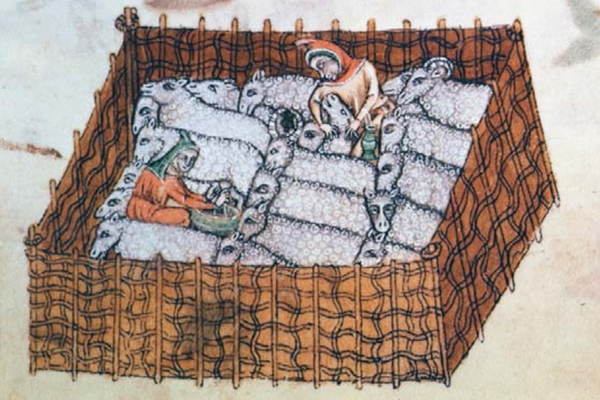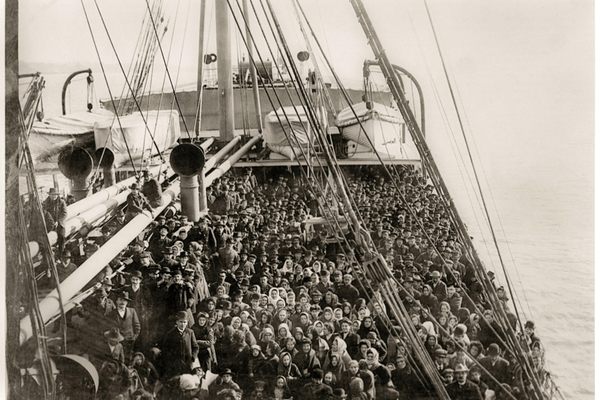Objects of Intrigue: The Medieval Knight With a Chinese Sword, Who Was Once A Bridge
Tomb Effigy of Jean d’Alluye (photograph by palindrome6996/Flickr user)
At first glance, the Tomb Effigy of Jean d’Alluye appears to depict perfectly the French Crusader knight: chain-mail shirt, giant shield, eyes awake but calm, hands folded in piety, a lion resting at his feet as a sign of courage and strength. Yet this knight’s grave — held in the Gothic Chapel of the Cloisters museum in New York — has something no other nobleman of his time had: a Chinese sword.
A closer look at the sword (photograph by the author)
The sword has baffled scholars ever since the mid-13th century sculpture turned up at a Paris dealer in the early 1900s. Before that the knight had a curious journey from honored dead in 1248 in the abbey of La Clarté-Dieu that he founded near Tours, to one of the many symbols of the aristocracy displaced in the secularization of the abbey following the French Revolution, to the use of the limestone knight as a bridge.
According to the Cloister’s Medieval Monuments book, following the sale of the abbey in 1791, a farmhouse was constructed on the site in 1850, and Jean d’Alluye was ”at one point used face down as a bridge over a local stream and was not rescued until a cleaning of the channel revealed its existence.” (No details on what happened to the actual Jean d’Alluye’s skeleton.)
(photograph by Peter Roan)
Yet despite such indignities for the centuries-old knight, his tomb is remarkably intact, including the odd sword which must have been a cherished possession to make it onto his final depiction. With its flowering handle and very un-European blade, it’s obviously not from France, and is possibly something he picked up while on a Holy Land pilgrimage although even to get there it would have to travel far, as the only swords that it resembles are Chinese. And in the 13th century, the distance from France to China was basically the span of the known world for a knight like Jean d’Alluye.
Helmut Nickel, Curator Emeritus of Arms and Armor at the Metropolitan Museum of Art, writes in his 1991 article on the effigy: ”Whether it was traded peacefully along the ancient Silk Road, or was carried by a raider on the conquering horses of the Mongols, whether Jean d’Alluye acquired it as an exotic collector’s item in the bazaar of some Levantine port, or took it as booty on a Syrian battlefield, we will never know.”
(photograph by Qabluna/Flickr user)
The Tomb Effigy of Jean d’Alluye is at the Metropolitan Museum of Art’s Cloisters branch in New York City.
OBJECTS OF INTRIGUE is a feature highlighting extraordinary objects from the world’s great museums, private collections, historic libraries, and overlooked archives. See more incredible objects here >


















Follow us on Twitter to get the latest on the world's hidden wonders.
Like us on Facebook to get the latest on the world's hidden wonders.
Follow us on Twitter Like us on Facebook